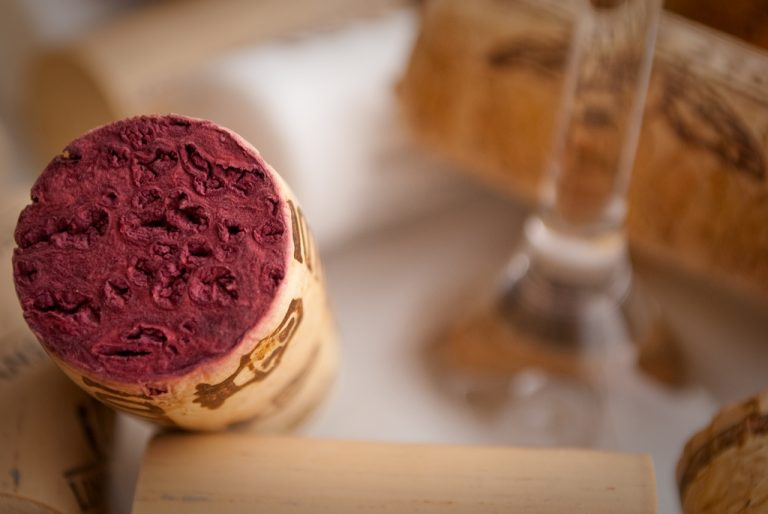Wine Studies: What Is Cork Taint?
Despite technological innovations in wine bottle closure systems, natural cork remains the most used closure in the business. It’s also the closure that most consumers associate with “tradition” in wine. Additionally, as you may have read recently, a newer survey by Wine Opinions found that consumers still overwhelmingly prefer natural cork to all other closure types, and associate wine closed with cork as a “high quality” product.
When asked why consumers overwhelmingly choose cork, Carlos de Jesus, Operational Director of the InterCork program of APCOR, the Portuguese Cork Association, stated that “Cork closures have a long-standing history in the wine industry and have been scientifically and empirically proven to be the most effective sealing system for preserving the sensorial quality and neutrality of wines during the aging process. Going back centuries, the world's greatest wines have always used cork, and it comes as no surprise that in 2017 cork remains the preferred choice of fine wine producers and connoisseurs alike."
One of the reasons why there was much innovation in the wine closure market to begin with was the issue of cork taint in wines (what is referred to as "corked wine"). Originally blamed solely on the cork, industry pros quickly tried to find ways to reduce the prevalence of cork taint in wines and at times developed new closure technologies that would avoid the problem all together. Of course, we now know that the compounds that contribute to cork taint can come from sources other than the cork itself, though the cork is still considered the most likely source of the contamination.
WHAT IS CORK TAINT?
“Cork taint” is often described as a “moldy” or “musty” smell that can overpower the more pleasant aromal of a wine. You might have also heard the smell of cork taint referred to as “wet basement” or “wet dog” or "wet newspaper". According to studies, cork taint affects anywhere between 1% and 7% of wines, though the exact number affected is poorly understood.
The most studied compound that is attributed to the offensive characteristics of cork taint is 2,4,6-trichloroanisole (TCA), however in reality, there is an entire family of haloanisoles that contribute to the cork taint phenomenon, be it individually or interacting in concert. Some examples of other cork taint-contributing compounds include 2,4-dichloroanisole (2,4-DCA), 2,6-dicholoranisole (2,6-DCA), 2,3,4,6-tetrachloroanisole (TeCA), pentachloroanisole (PCA), and 2,4,6-tribromoanisole (TBA). The contribution of TBA to cork taint, in fact, has been found to be significant, with studies showing not only can it contribute to off-aromas, but it can also interact with TCA to muck with receptors on your tongue to mask the desired aromas/flavors in the wine.
CONSUMER DETECTION VERSUS CONSUMER REJECTION
So, we know cork taint exists in a small percentage of wines on the market. Just how well are we as consumers able to detect the presence of TCA in wines? There have been countless studies on the detection of TCA in wines, with values from wine experts ranging anywhere from 1.4 parts per trillion (ppt) in Pinot Noir to 17.4 ppt in Sauvignon Blanc. It’s important to note, however, that not everyone can detect TCA at these levels. In fact, the average wine consumer is not as sensitive to TCA aromas as a wine expert, so their detection levels will be much higher than the expert. Case in point, while the wine experts detected TCA in Sauvignon Blanc at a level of 17.4 ppt, wine novices detected it in the same wine at a much higher level of 210 ppt.
While there have been numerous studies on TCA detection, much fewer have focused on “consumer rejection” levels of TCA. In other words, while someone might be able to detect TCA at a certain level, they may be willing to still purchase the wine up to a much higher level of TCA present.
A 2005 study found that the levels of TCA that the average consumer (i.e. someone who drinks wine at least once per week and who does not consider themselves an expert) will not reject a wine with TCA even if those levels are higher than they can detect. In fact, even when TCA levels were very high (greater than 8 ppt), about 10% to 20% of consumers still considered the wine acceptable for one reason or another.
The study also found that there was a significant negative association between cork taint knowledge and detection thresholds, indicating that more experienced wine consumers were more sensitive to cork taint than their more average counterparts. Additionally, consumers with more wine experience were more likely to reject a wine with higher TCA levels than the average consumer. It’s important to note, that the study just mentioned only focused on white wine, so we don’t not have the complete picture here, just a glimpse into the behavior.
CONCLUSIONS
For the average consumer, some research has shown that despite being able to taste/smell TCA at certain levels, they will still go ahead and drink the wine for reasons that are not totally clear. According to the 2015 American Wine Preference Survey (Sonoma State University and The Wine Business Institute), 4% of respondents considered themselves to be wine experts, 21% said they had advanced wine knowledge, while the majority considered themselves to be intermediate or novice wine drinkers (57% and 18%, respectively). If most American consumers consider themselves to be “average”, and the “average” consumer is perfectly happy drinking a wine that has some TCA in it, then should wineries be so concerned about the prevalence of cork taint today?
So, is cork taint really a problem? Yes and no. If you’re a fine wine/high end winery, cork taint can surely be a big deal and an economic headache. But, if you’re a winery who markets their products to the average consumer, perhaps it’s not something that would be of top concern. As the 2017 study from Wine Opinions suggest, cork is still the MacDaddy of wine closures and cork taint doesn’t appear to be slowing it down.
SOURCES
Prescott, J., Norris, L., Kunst, M., and Kim, S. 2005. Estimating a “consumer rejection threshold” for cork taint in white wine. Food Quality and Preference 16: 345-349.
Takeuchi, H., Kato, H., and Kurahashi, T. 2013. 2,4,6-Trichloroanisole is a potent suppressor of olfactory signal transduction. PNAS 110(40): 16235-16240.
Tarasov, A., Rauhut, D., and Jung, R. 2017. “Cork taint” responsible compounds. Determination of haloanisoles and halophenols in cork matrix: A review. Talanta 175: 82-92.



